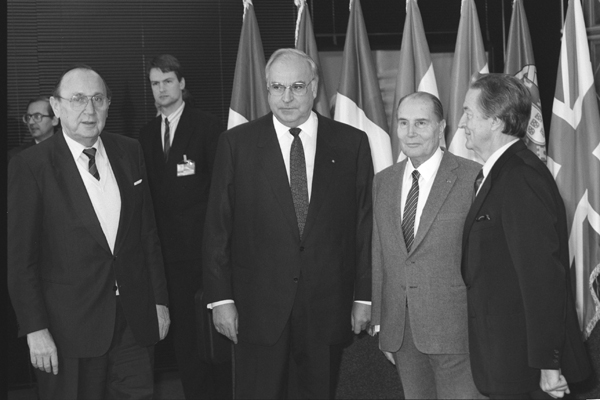Source

Source: Bildarchiv, B 145 Bild-00003260 REGIERUNGonline/Reineke
The West German government was ill prepared for the collapse of the SED regime. In his Ten-Point Plan of November 28, 1989, Chancellor Helmut Kohl discussed how the two German states could become integrated, and he also held out the prospect of a reunified Germany. The plan caused concern among Germany’s EC and NATO allies, who worried about the future course of Germany’s foreign and European policies. Nevertheless, at the EC summit in Strasbourg in December 1989, Germany’s European partners endorsed reunification – at least verbally. The British government under Margaret Thatcher was opposed to reunification, however, and French president François Mitterrand felt that it needed to be coupled with greater European integration. There was also uncertainty about Germany’s eastern borders, since Kohl – in deference to German expellee associations [Vertriebenenverbände] – found it difficult to definitively accept the loss of Germany’s former eastern territories.
The photo, taken at the start of the EC summit, shows French president François Mitterrand (2nd from right) and his foreign minister, Roland Dumas (right), welcoming German foreign minister Hans-Dietrich Genscher (left) and Chancellor Helmut Kohl (2nd from left) in the Palais de Congrès.

Source: Bildarchiv, B 145 Bild-00003260 REGIERUNGonline/Reineke